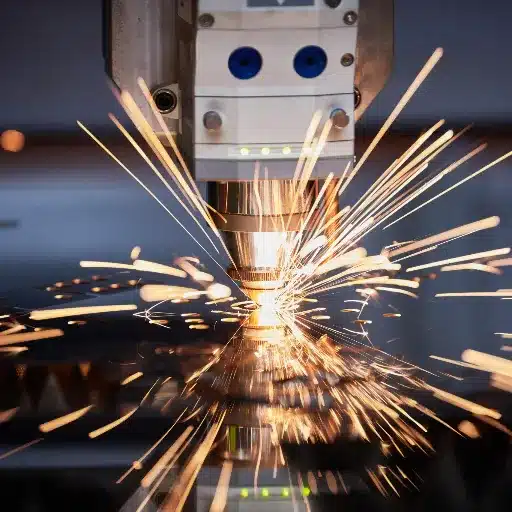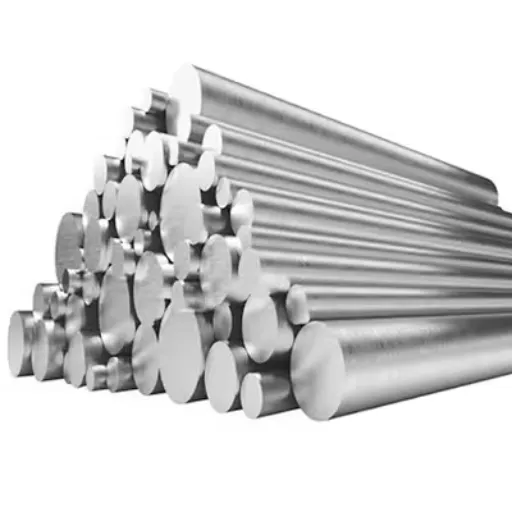Strength, durability, and resistance to corrosion allow stainless steel to be an ideal material for industries spanning from construction to cookware. On the other hand, different stainless steel grades serve various purposes, making them distinct. Two types of the most popular stainless steel grades are 304 and 410, both of which have their unique properties and applications. This post will discuss the composition, mechanical properties, advantages, and ideal use cases of 304 and 410 stainless steel types. After the post, you will have the answer for which type of stainless steel best suits your requirements.
What Are the Key Characteristics of 304 Stainless Steel?
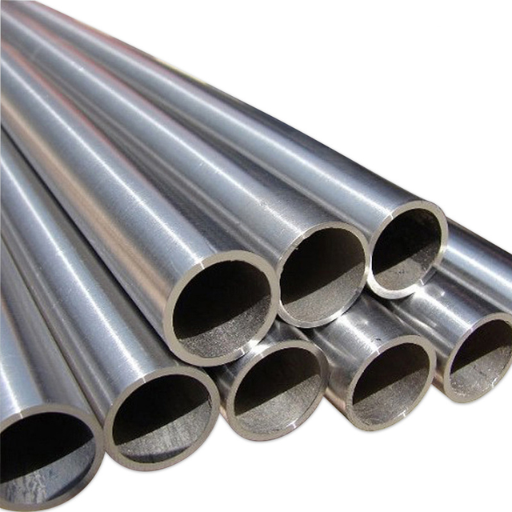
Type 304 stainless steel is sometimes called 18/8 because it contains 18% chromium and 8% nickel. It is highly versatile and offers excellent corrosion resistance. It is highly durable and non-magnetic in the annealed state, easy to clean and fabricate, and is ideal for chemical containers, food processing equipment, and kitchen appliances. Furthermore, 304 stainless steel is moisture and acid-resistant, which ensures long-lasting performance in various environments.
Why is 304 Stainless Steel Popular?
According to my research, 304 stainless steel is versatile, durable, and has corrosion resistance, making it very popular. Its 18% chromium and 8% nickel composition enables this type of metal to withstand rust and staining even with moisture and acidic components. Additionally, it is non-magnetic in its annealed state, easy to clean, and used widely in kitchen appliances, food service equipment, and industrial containers. Because of its versatility, it is a trusted and cost-effective material in many industries.
How Does the Nickel Content Affect iwiths Properties?
The nickel content in 304 stainless steel aids in the mitigation of corrosion and enhances the toughness and durability of the metal. Nickel stabilizes the austenitic structure, increasing the ductility and resistance of stainless steel to extreme temperatures. For example, 304 and 316 are austenitic stainless steels that maintain their nonmagnetic properties and excellent formability with nickel. 304 stainless steel has about 8 to 10.5 % nickel content. In comparison, 316 stainless steel contains 10 to 14 % nickel, further increasing its resistance to chloride corrosion, making it ideal to be used in marine and chemical environments.
The amount of nickel present impacts corrosion resistance, ductility, and strength. A high percentage of nickel improves resistance to acidic and alkaline materials, enabling the material to perform effectively in demanding applications. For instance, the combination of 10-14% Nickel with 2-3% molybdenum in 316 stainless steel has been shown to provide greater strength and lifespan in rough conditions. This proves that nickel is undeniably one of the most essential elements when it comes to the performance and reliability of stainless steel throughout various industries.
What Makes 304 Stainless Steel an Austenitic Material?
304 stainless steel is classified as an austenitic material because of its specific chemical composition and associated crystal structure. Its main constituent is iron, with 18-20% chromium and 8-10.5% nickel. These elements stabilize the austenite phase, a face-centered cubic (FCC) structure at room temperature. This unique structure allows 304 stainless steel to display outstanding non-magnetism, ductility, corrosion resistance, and good formability. In addition, its ultra-low carbon content, which is capped at 0.08%, reduces the amount of carbides that would form and precipitate during welding, resulting in enhanced durability and reliability. These parameters of 304 stainless steel give it versatility and the most popular austenitic alloy.
Exploring the Properties of 410 Stainless Steel

410 stainless steel is a martensitic alloy with high strength, hardness, and moderate corrosion resistance. Unlike austenitic grades, 410 has a higher carbon concentration, which increases its hardness and wear resistance post-heat treatment. This makes it suitable for cutlery, valve components, and machinery parts. Nevertheless, with a chromium content of around 11.5-13.5%, 410 possess moderate corrosion resistance, which mandates careful maintenance in harsh environments. Compared to austenitic steels, less ductility is compensated with better machinability and magnetic properties, making it preferable for structural and mechanical applications.
How Does 410 Stainless Steel Differ from 304?
Differences between 410 stainless steel and 304 stainless steel can be seen in their composition, properties, and respective areas of use.
- Composition:
- 410 Stainless Steel has a composition of approximately 11.5-13.5% chromium and a negligible amount of nickel, usually articulated to under 0.75%.
- 304 Stainless Steel is an austenitic alloy containing 18-20% chromium and 8-10.5% nickel.
- Corrosion Resistance:
- 410 is moderately resistant to corrosive conditions, making it suitable for less harsh environments; however, rust can occur if adequate mechanisms are implemented for highly corrosive situations.
- 304 possesses an excellent protective nature when it comes to corrosion, especially with humid and acidic elements. This is why it is superior in extreme environments.
- Strength and Hardness:
- 410 is subject to heat therapy, which makes it possible to achieve more hardness and strength, making it perfect for tasks needing higher abrasion resistance.
- While 304 cannot be hardened through heat treatment, it possesses superior ductility and toughness to withstand greater levels of stress and strain.
- Magnetic Properties:
- Due to its martensitic nature, 410 is magnetic.
- In general, 304 stainless steel alloy does not exhibit magnetism unless in a cold working state. After this process, 304 transforms into a magnetic state.
- Applications:
- Cutlery, valves, and machinery parts that necessitate durability and hardness incorporate 410 stainless steel.
- Stainless steel grade 304 is more commonly used because it is more versatile. It is widely used in food-grade equipment, architecture, and even chemical processing due to its resistance to corrosion and easier ability to sculpt into other shapes.
Understanding these differences enables industries to select the grade that would fit their operational requirements.
What Role Does Heat Treatment Play in 410 Stainless Steel?
Heat treatment is essential for enhancing the properties of 410 stainless steel. Different processes, such as hardening, tempering, or annealing, can increase the material’s hardness, strength, and wear resistance as per the requirements. For example, tempering makes the material less brittle while balancing strength with toughness, therefore increasing the material’s ability to resist mechanical stress. This results in 410 stainless steel being flexible enough for components that require durability in extreme conditions.
Is 410 Stainless Steel Magnetic?
Yes, 410 stainless steel is magnetic because it is martensitic stainless steel and possesses a crystal structure that can be magnetized. It is essential to note that 410 retains a considerable amount of magnetism even though its chemical composition and the heat treatment it undergoes affect its magnetic properties.
Comparing 304 vs. 410 Stainless Steel in Terms of Corrosion though
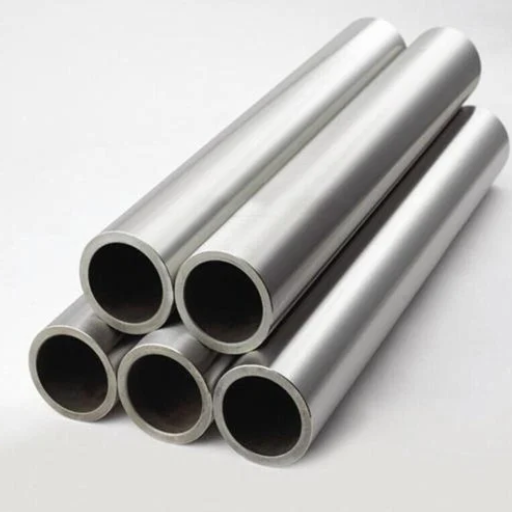
Corrosion resistance for 304 stainless steel is more significant than that for 410 stainless steel. This is because 304, austenitic stainless steel, has higher chromium and nickel content, making it resistant to oxidation and challenging environmental conditions. In contrast, 410 martensitic stainless steel has lower chromium content, making it more susceptible to rust and corrosion, particularly in moist environments. 410 stainless steel is suitable for moderately moist conditions, while 304 stainless steel will be more applicable where excellent corrosion resistance is needed.
Which Offers Superior Corrosion Resistance?
In contrast to stainless steel 410, 304 stainless steel has better corrosion resistance due to its significantly higher chromium (18-20%) and nickel (8-10.5%) content. These components promote the development of a strong oxide layer, which prevents iron from rusting and causing corrosion. Conversely, 410 stainless steel’s chromium contents (11.5 to 13.5%) are lower, and the absence of nickel makes it oxidize and corrode more, thus limiting its application. Additionally, 304 stainless steel significantly outperforms 410 stainless steel in acidic or saltwater environments, where the able 304 esters steel is performatively better, while equable 410 remains performatively better in supportive environments. For sustained exposure to a moisture-laden climate or corrosive chemicals, 304 is the most suitable gear based on its chemical composition and protective capabilities.
How Do Chromium and Nickel Influence Corrosion Resistance?
Using chromium and nickel elements significantly improves stainless steel’s corrosion resistance. Oxygen in the environment readily reacts with chromium to form a thin oxide layer that protects against oxidation or rusting. Nickel, on the other hand, enhances steel’s overall strength and makes it more resistant to chemical attack, particularly in acidic mediums or areas of high humidity. Because of these elements, stainless steel does not lose its strength or appearance even when subjected to extreme conditions.
Understanding the Corrosive Environments Each Can Withstand
Stainless steel grades are allocated to corrosive environments based on their ability to withstand certain conditions. In moderately aggressive environments like high humidity or mildly acidic areas, stainless steel 304 is the best option because its chromium content of 18-20% and its 8-10.5% nickel content is well balanced. However, in highly aggressive environments containing chlorides or more potent acids, stainless steel 316 grade is more favorable because of its enhanced molybdenum content (2-3%), leading to greater pitting and crevice corrosion resistance. For highly aggressive environments like marine or industrial regions, duplex stainless steels (e.g., alloy 2205) are best due to their much greater strength and corrosion resistance brought about by higher chromium (22-23%) and molybdenum (3-3.5%) constituents. Each grade’s effectiveness depends on factors like temperature, pH, and the presence of specific chemicals, making it crucial to match the material properties to the environment.
Applications of 410 and 304 Stainless Steel
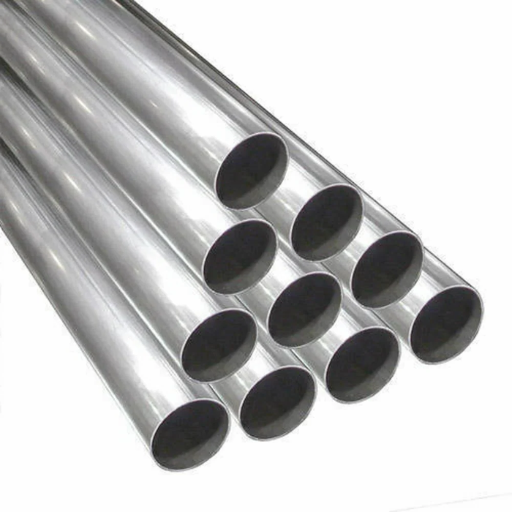
Both 410 and 304 stainless steel possess versatility as materials but have specific applications depending on their properties.
As a martensitic grade, 410 stainless steel has high strength and moderate corrosion resistance, which makes it suitable for cutlery, pump shafts, fasteners, and industrial machinery components. Wear resistance is essential for these items, and 410 stainless steel provides that.
Austenitic 304 stainless steel is well known for its weldability and excellent corrosion resistance. It is widely employed in producing food processing and kitchen equipment, chemical containers, medical devices, architectural structures, and even in humid environments or mild chemicals.
The operational environment and performance requirements will dictate using 410 or 304 stainless steel.
Where is 304 Stainless Steel Typically Used?
The primary corrosion resistance, strength, and ease of fabrication make 304 stainless steel versatile, with applications across industries. Some are listed below:
- Food and Beverage Industry: Used to construct sinks, countertops, and utensils because of compliance with food safety standards and resistance to food acids and cleaning chemicals.
- Architectural Structures: Used for facades, handrails, and cladding due to pleasant finish and durability against weathering.
- Chemical Processing: It is used for containers and piping of mild chemicals because it withstands corrosion from many organic and inorganic compounds.
- Medical Equipment: Found in surgical instruments and implants due to biocompatibility with human tissue and ease of sterilization.
Technical Parameters:
- Chemical Composition:
- Chromium (Cr): 18-20%
- Nickel (Ni): 8-10.5%
- Carbon (C): Max 0.08%
- Density: 8 g/cm³
- Tensile Strength: 515 MPa (minimum)
- Yield Strength: 205 MPa (minimum)
- Maximum Operating Temperature:
- Continuous Use: 870°C (1598°F)
- Intermittent Use: 925°C (1697°F)
Armstrong believes that 304 stainless steel, with the above-mentioned properties, should be an optimal choice for applications needing the right amount of strength, durability, and resistance to corrosive environments.
What Applications Are Suited for 410 Stainless Steel?
The high mechanical strength and moderate corrosion resistance make 410 stainless steel ideal for various applications. This alloy’s martensitic structure makes it exceptionally adaptable, providing wear and heat resistance. The following include primary uses, together with some of its relevant technical parameters:
- Cutlery and Kitchen Tools: 410 stainless steel’s excellent resistance to mild corrosion, in addition to its hardness and outstanding edge retention, makes it an ideal material for precision tools such as knives, forks, and other kitchen tools. It is preferred for such applications because it can endure repeated use and retain a sharp edge.
- Rockwell Hardness (HRC) when heat treated: 35 – 45 HRC
- Good polishability enhances its suitability for aesthetic applications.
- Fasteners and Bolts: For industrial-type screws, rivets, and bolts used in construction, automotive, and machinery, 410 stainless steals high strength is beneficial. These components can endure moderate stress and resist wear in non-severe environments.
- Tensile Strength (when hardened and tempered): 450 – 600 MPa
- Good machinability in the annealed condition.
- Pump and Valve Components: 410 stainless steel is commonly used in valves, pumps, and other parts exposed to water or other mildly corrosive fluids. Its effectiveness in withstanding abrasive and mechanical wear assures longevity and performance in such conditions.
- Functions efficiently at a maximum temperature of 700 degrees Celsius (1292 degrees Fahrenheit).
- Reacts moderately to corroding materials such as chlorides and weak acids.
- Petrochemical and Power Generation: Due to its strength and resistance to heat, it is well suited for steam valves, turbine blades, and equipment in refineries.
Even though 410 stainless steel possesses considerable advantages, its corrosion resistance does not compare to that of austenitic steels, including 304 or 316. Adequate heat treatment and routine maintenance improve its service life and structural performance.
Why Are Fasteners Commonly Made from 410 Stainless Steel?
410 stainless steel is fastened because of its strength, hardness, and corrosion resistance. Due to their rugged nature, they are helpful in fields with high exposure to wear and tear, such as construction, automotive, and machinery industries. In addition, the cost aspect of 410 stainless steel fasteners is beneficial compared to high-grade stainless steel as they are cost-effective for many sectors. Ordered technologies ensure that the proper heat treatment gives them reliable performance in demanding environments, guaranteeing stability over time.
Is Rust a Concern for 410 Stainless Steel vs 304?

Rust is a factor in 410 stainless steel compared to 304 stainless steel. The level of corrosion resistance in 410 stainless steel is moderate. Still, the lower percentages of chromium and nickel give it a lower resistance to rust. On the other hand, 304 stainless steel has a higher prevalence of both, allowing it to withstand rust and corrosive environments better. This means that when resisting rust is a must, 304 stainless steel is the ideal choice.
Understanding Rust Resistance in Both Grades of Stainless Steel
If your main goal is rust resistance, 304 stainless steel is the choice over 430 stainless steel. Its higher chromium and nickel content allows 304 to corrode less in highly humid or corrosive environments. However, if you are looking for a more economical option, 430 stainless steel has decent corrosion resistance in dry environments and is much cheaper. The decision ultimately rests on the specific corrosion requirements of the environment and the budget set aside for the purchase.
How Does Chromium Content Impact Rust Formation?
Chromium in stainless steel greatly aids in stopping rust as it forms an oxide layer on the surface. This protective layer acts as a barrier, preventing the surrounding air and water from coming into contact with the iron, causing it to rust. From what I have researched, a higher percentage of chromium increases these alloys’ ability to withstand corrosive and humid environments, such as 304 stainless steel. It is all about achieving that self-repairing shield that can withstand harsh conditions while continuing to last a long time.
References
- Stainless Steel 304 vs. 410: Which Is Right for Your Project?
- 300 Series Stainless Steel vs 400 | 304 vs 410 | SFS USA
- The Difference Between 304 And 410 Stainless Steel – News
Frequently Asked Questions (FAQ)
Q: What is the primary difference between 304 and 410 stainless steel?
A: The primary difference between 304 and 410 stainless steel is their composition and properties. 304 stainless steel is an austenitic stainless steel, part of the 300 series, known for its excellent corrosion resistance and is typically used in applications requiring durability and resistance to oxidation. In contrast, 410 stainless steel is a martensitic type of stainless steel, part of the 400 series, offering good wear resistance and hardness, making it suitable for applications requiring high strength and moderate corrosion resistance.
Q: How does the corrosion resistance of 304 stainless steel compare to 410 stainless steel?
A: 304 stainless steel offers better corrosion resistance than 410 stainless steel. The austenitic structure of 304 stainless steel, with its higher chromium and nickel content, provides excellent protection against rust and corrosion, making it ideal for applications like food processing equipment and environments with better corrosion resistance. On the other hand, 410 stainless steel may be more prone to corrosion, especially in harsh environments.
Q: In what applications are 304 and 410 stainless steel commonly used?
A: 304 stainless steel is commonly used in applications requiring excellent corrosion resistance, such as kitchen appliances, food processing equipment, and architectural paneling. 410 stainless steel, with its high strength and wear resistance, is often used in applications such as cutlery, surgical instruments, valves, and fasteners where hardness and resistance to wear are essential.
Q: What are the unique properties of 304 stainless steel?
A: 304 stainless steel’s unique properties include its excellent corrosion resistance, high ductility, and good weldability. As an austenitic stainless steel, it maintains its strength and toughness at high temperatures, making it suitable for various applications, including those in high-temperature environments.
Q: What makes 410 stainless steel suitable for specific applications?
A: 410 stainless steel suits applications requiring high strength, hardness, and wear resistance. Its martensitic structure provides these characteristics, making it ideal for cutlery, surgical tools, and other applications where resistance to wear and moderate corrosion resistance are necessary.
Q: How does the composition of 304 stainless steel differ from 410 stainless steel?
A: 304 stainless steel contains a higher percentage of chromium and nickel than 410 stainless steel, contributing to its excellent corrosion resistance and austenitic structure. On the other hand, 410 stainless steel has a higher carbon content, leading to its martensitic structure and enhanced hardness and wear resistance.
Q: Are there any advantages of using 410 stainless steel over 304 stainless steel?
A: The advantages of using 410 stainless steel over 304 stainless steel include its higher hardness and wear resistance due to its martensitic structure. This makes 410 stainless steel more suitable for applications where mechanical strength and resistance to wear are critical, such as in cutting tools and industrial equipment.
Q: Can 410 stainless steel be used in high-temperature environments?
A: While 410 stainless steel can withstand moderate temperatures, it is not as suitable as 304 stainless steel for high-temperature environments. 304 stainless steel maintains its strength and corrosion resistance better at elevated temperatures, making it more appropriate for applications requiring exposure to high heat.
Q: How does galvanic corrosion affect 304 and 410 stainless steel when used together?
A: When 304 and 410 stainless steel are used together, there is a potential for galvanic corrosion if they are in electrical contact and exposed to an electrolyte. 304 stainless steel, being more noble, could accelerate the corrosion of 410 stainless steel due to the electrochemical reaction. It is essential to consider this factor in design to prevent galvanic corrosion.


